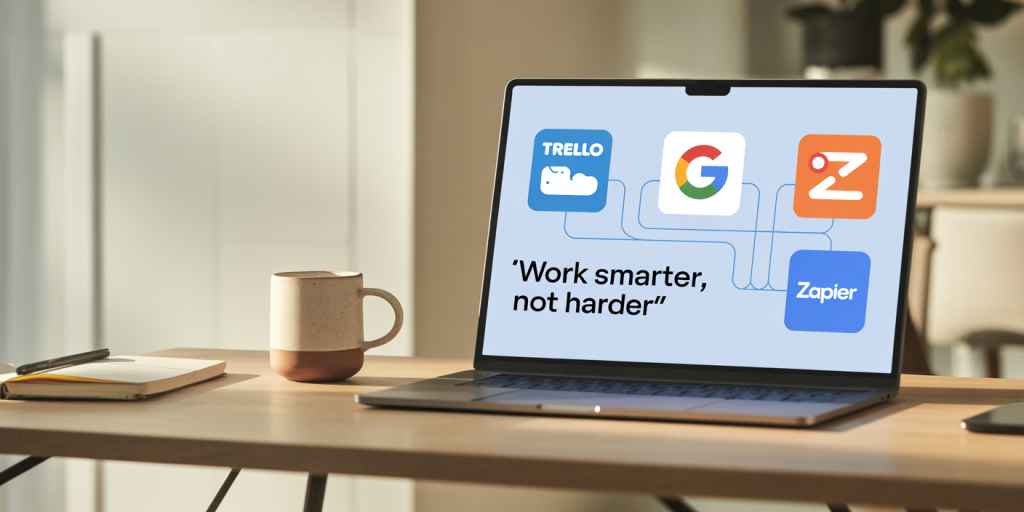Time Management for Busy Professionals: Get More Done in Less Time
Anúncios
In the fast-paced world of modern business, time is undoubtedly one of the most valuable resources professionals have. According to a report by the Harvard Business Review, executives typically work more than 60 hours per week, yet many still struggle to complete essential tasks within their working hours. For busy professionals balancing multiple responsibilities, mastering time management is not just a skill—it’s a necessity. Efficient time management boosts productivity, reduces stress, and enhances work-life balance, enabling individuals to achieve more in less time.
Consider the case of Sarah, a marketing manager who felt overwhelmed by her daily to-do list. After restructuring her daily schedule and prioritizing tasks, she increased her productivity by 40%, all while working fewer overtime hours. This article explores actionable time management strategies tailored for busy professionals, featuring practical examples, data-backed insights, and future perspectives on evolving time management approaches.
Anúncios
Understanding the Time Management Challenge
Busy professionals often face competing demands that make managing time effectively difficult. Multitasking, frequent interruptions, and unclear prioritization frequently undermine productivity. A study from the University of California, Irvine, reveals that after being interrupted, it takes workers an average of 23 minutes and 15 seconds to refocus on the original task. This disruption wastes a significant amount of precious time daily.
Moreover, many professionals inadvertently fall into the trap of activity without progress—spending hours on low-impact tasks that add little value. For example, drafting emails or attending non-essential meetings can consume hours that could be better allocated to strategic thinking or project execution. Recognizing these challenges is the first step toward adopting better time management methods.
Prioritization: The Backbone of Effective Time Management
Successfully managing time involves prioritizing tasks based on urgency and importance. The Eisenhower Matrix is a renowned tool that categorizes tasks into four quadrants: urgent and important, important but not urgent, urgent but not important, and neither urgent nor important. By focusing on high-priority tasks, professionals can allocate their time where it matters most.

To illustrate, John, a software engineer, used the Eisenhower Matrix to reorganize his workflow. Previously, he tackled urgent but less critical coding bugs immediately, sidelining longer-term development goals. After restructuring, John reserved mornings for strategic coding tasks (important but not urgent) and delegated minor bug fixes to junior team members. This shift increased his throughput by 30%, enabling him to deliver higher-quality features on schedule.
Time blocking complements prioritization by dedicating specific time slots to important tasks, reducing the temptation to multitask. For instance, professionals can block out two hours each morning for deep work on critical projects, followed by a set period for email checking and administrative duties. This approach minimizes distractions and optimizes focus.
Harnessing Technology: Tools for Smarter Time Management
Digital tools have revolutionized how professionals manage their time. Platforms such as Trello, Asana, and Microsoft To Do offer task management features that allow users to prioritize, set deadlines, and track progress in real-time. Studies show that teams using project management software reported a 20% increase in productivity compared to those relying on email or spreadsheets alone.

Calendar applications with integrated reminder systems, like Google Calendar or Outlook, help busy individuals schedule appointments, block focus times, and avoid overbooking. For example, Maria, a project manager, uses color-coded calendar blocks to differentiate between client calls, internal meetings, and individual work periods. This visual scheduling reduces task overlap and enhances clarity across her commitments.
Additionally, automation tools can handle repetitive tasks, such as email filtering or report generation, freeing up valuable time for high-impact activities. For instance, Zapier enables users to connect different apps for automated workflows. A sales professional might automate lead data entry from emails directly into a CRM system, reducing manual input time by approximately 50%.
| Productivity Tool | Primary Function | Average Time Saved Per Week | Suitable For |
|---|---|---|---|
| Trello | Task and project management | 3-5 hours | Teams and individuals |
| Google Calendar | Scheduling and reminders | 2-4 hours | All professionals |
| Zapier | Workflow automation | 4-6 hours | Repetitive task-heavy roles |
| Microsoft To Do | Task prioritization | 1-3 hours | Individuals |
Minimizing Distractions and Optimizing Work Environment
Distractions are a major time sink for professionals. Research by Udemy indicates that the average employee loses 2.1 hours daily due to distractions. Common interruptions include social media notifications, open office chatter, and unscheduled meetings. To combat these, it’s crucial to create an optimal work environment and establish boundaries.
One practical example is the “Do Not Disturb” (DND) strategy widely adopted by executives. Setting phone and computer to DND mode during focus sessions helps minimize disruptions. Emma, a senior consultant, schedules ‘focus hours’ without meetings and communicates her availability to colleagues. This practice has improved her deep work time by 35%, enabling her to deliver client recommendations more efficiently.

Additionally, decluttering the physical workspace has proven benefits. A study published in the Journal of Neuroscience found that people with tidy desks performed better cognitively and were less prone to distractions. Simple changes such as organizing files, using noise-canceling headphones, or designating specific areas for different types of work foster better concentration.
Delegation and Saying No: Key Productivity Boosters
Busy professionals often feel compelled to shoulder every responsibility, but this mindset can be counterproductive. Delegation, when done correctly, not only frees up time but also promotes team development. Effective delegation involves identifying tasks suitable for others, clarifying expectations, and following up appropriately.
Mark, a financial analyst, delegated routine data validation tasks to junior staff, reserving his own time for complex financial modeling. The result was a 25% reduction in his working hours and improved team efficiency. Conversely, over-delegating or unclear assignment can cause confusion and backtracking, so careful management is vital.
Learning to say no is equally important. A survey by Gallup found that employees who frequently say yes to every request report higher stress and burnout levels. Recognizing when to decline low-value tasks or meetings helps maintain focus on core responsibilities. For example, Linda, an HR director, politely declined participation in multiple recurring meetings that did not align with her strategic goals, gaining an extra four hours weekly to prioritize leadership development initiatives.
Future Perspectives on Time Management for Professionals
As technology and workplace cultures evolve, time management strategies will continue to adapt. Artificial intelligence (AI) and machine learning are already beginning to assist in task prioritization and workflow optimization. Tools like AI-driven email triage, smart scheduling assistants, and predictive analytics can help professionals manage their time more dynamically and effectively.
Remote work trends also reshape time management. Flexibility in work hours requires professionals to build stronger personal discipline and cultivate effective asynchronous communication. Future time management solutions will likely emphasize personalized and adaptive systems that align with individual working styles and life demands.
Furthermore, the integration of mindfulness and wellness practices within time management frameworks is gaining traction. Research shows mindfulness can improve focus and reduce burnout, critical components in sustainable productivity. As companies prioritize employee wellbeing, time management will increasingly incorporate balance—not merely maximizing output but optimizing holistic success.
—
Mastering time management is a continual process that requires self-awareness, discipline, and the use of effective tools. By prioritizing tasks, leveraging technology, minimizing distractions, delegating appropriately, and adapting to future trends, busy professionals can significantly increase their productivity and reduce stress. The payoff is not just getting more done in less time, but gaining the capacity to thrive in both professional and personal domains.
